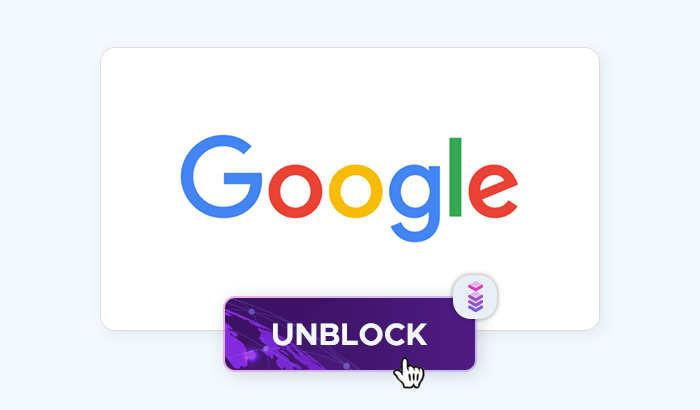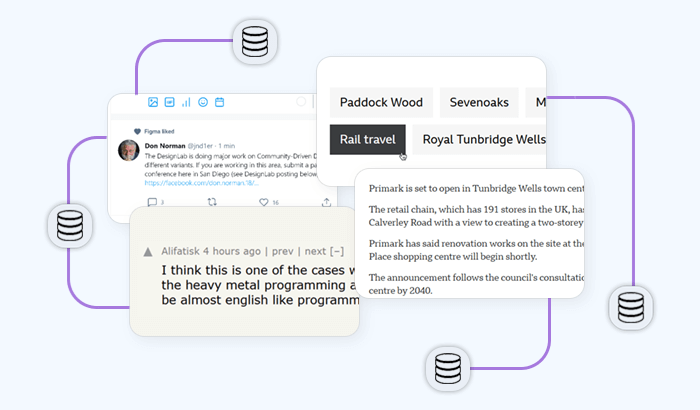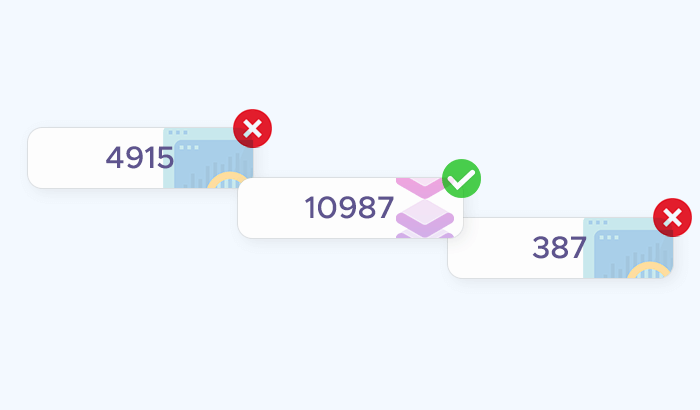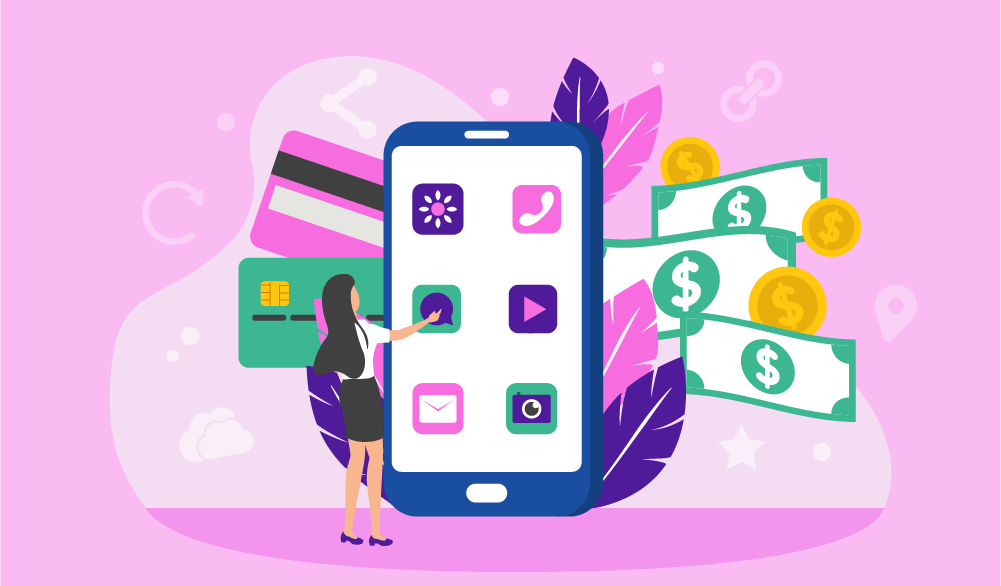

It can be quite hard to come up with a monetization approach that will bring the app owner as much revenue as they want, and won’t leave users annoyed and willing to abandon the application. In this article, we'll talk about different approaches to app monetization that are efficient in 2020 so that you can choose one that fits your business model.
What is app monetization?
App monetization is a strategy that allows developers to earn money with the application they’ve created. For some apps, it’s rather obvious how to monetize them while other apps are quite difficult to turn into a profitable project.
There are different ways of monetization, and you should choose a single one or a combination of several approaches to get the most out of your application. Note that not every method will work for all programs, so consider the unique features of your app.
It’s important to choose the approach that will bring you enough revenue without affecting the experience that users have when interacting with your application. Otherwise, you'll earn less money simply because you’re losing users that abandon your app for one reason or another. In the sections below, you’ll learn about the monetization techniques and how you can apply them to avoid the dissatisfaction.
Pay-per-download
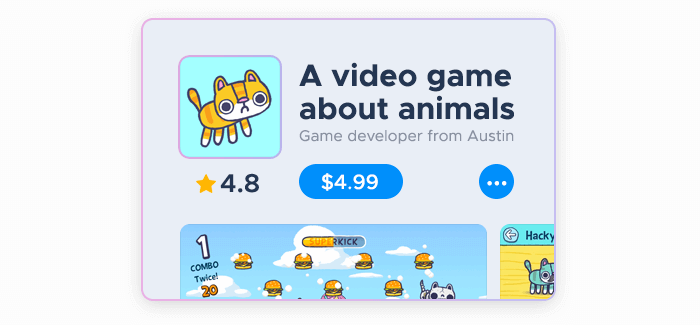
It’s the easiest way to monetize an app — just make users buy it to download it. Despite the simplicity of this approach, it has a significant drawback: To spend money on an app, users need to know it’s worth that. If you’ve just launched your application, people won’t be too eager to pay for it since they don’t really know anything about it.
This method works well for apps that have existed for a while, are quite popular, and have many daily downloads. Then, owners of such an application can switch to asking users to pay for it upon downloading. In this case, you could be sure your project will generate revenue steadily.
In-app advertising
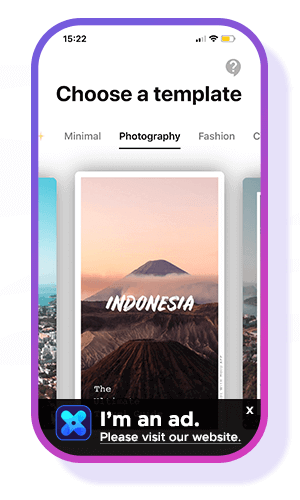
This is the most popular approach because it’s easy to execute. Yet, this technique can be quite annoying for users. Apps that are using in-app advertising as a monetization method will show users banners and pop-ups with advertisements, earning money from advertised products and services.
While this strategy seems to be simple to implement, it has obvious drawbacks. First of all, banners and pop-ups consume additional resources, thus potentially leading to loading delays and network lags. This will negatively impact the user experience, so in-app ads can nullify all the effort developers have put into creating a thought-out interface. Also, if there are too many ads, users may find it annoying.
Despite these disadvantages, most mobile apps still use this approach. Moreover, developers now often step away from banners and pop-ups implementing interstitial ads, i.e. advertisements that show up between user flows. For example, a user might see an ad while another level in the game is loading.
Another method is to use native or affiliate ads — advertisements that fit into the app perfectly and bring the user value without being too pushy. For instance, if you have a fitness app, you could advertise your users a calorie tracking app.
So, if you decide to opt for in-app ads as a monetization method, just be moderate and think through the way you'll implement advertisements into the interface so that they won’t annoy your users.
Rewarded ads
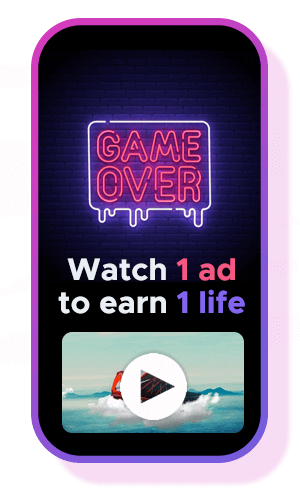
This approach is similar to in-app ads — by choosing it, you will also show users ads within your application. However, the scheme is a bit different. These ads will be valuable for users in some way. For example, if a person watches a 30-seconds advertisement video to get access to the extra content or to earn more points in a game. Thus, users will be interested in actually viewing the ads. You just need to keep them relevant for your target audience.
Also, it’s important to determine the right moment when users will be offered to watch an ad — for instance, in a game, a player can get an offer to view the advertisement to get an additional life before they lose.
Premium accounts
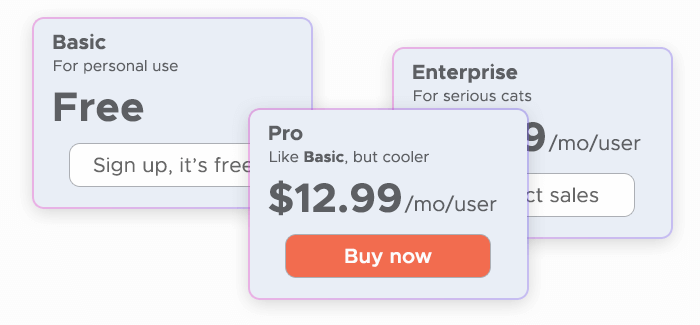
Simply divide user accounts into two categories — free and premium — and offer premium users certain benefits or access to additional useful features. This is a nice way around making people pay for downloading and app. You’re allowing them to get to know your product for free and then decide if they want to pay for more.
This monetization method is more user-friendly: It allows developers to create a steady flow of revenue that is easy to predict. Moreover, since users are already willing to pay for a premium account, it means they’re quite involved and it’s unlikely they will stop using your app. Thus, you’re creating a loyal user base that might recommend your product to others, too.
However, the freemium approach will only work well for truly high-quality apps. This means that you will need to have a reliable app concept and put a lot of effort into earning users who will be eager to pay for it.
In-app purchases
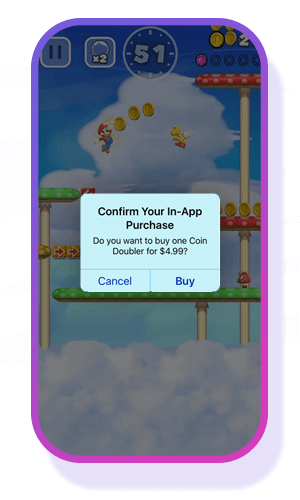
This approach is similar to the previous one. Using it, developers offer certain premium features or items for a particular price. For instance, a user could pay for virtual in-app currency to gain access to more functions or items. Or some things in a mobile game could cost a player some money. In fact, this method works best particularly for games as you can make users buy quite a lot of stuff there.
Data monetization
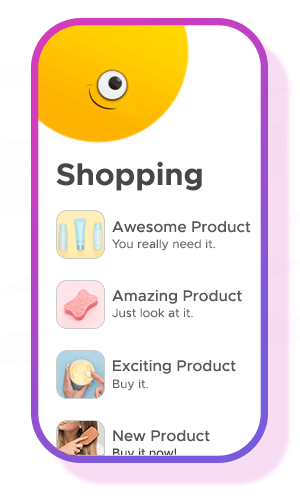
Developers that use this approach sell the user data they’ve gathered from people who were using their apps. This information usually contains insights into user behavior and preferences. Such data is extremely valuable to brands as it shows them how to market their products better.
This method allows developers to eliminate in-app ads and improve user experience. Obviously, there is a lot of criticism about data monetization because of ethical reasons. However, it’s hard to find a place on the internet that doesn’t gather and use our data in some way.
Moreover, users will consent to the service gathering and using their data before they actually get to use this application. Thus, the privacy of users is not violated. It also should be said that such data doesn’t contain sensitive information that could harm a person’s life.
Monetization network
This is a relatively new concept. As proxies become more popular, providers need to offer their customers more IP addresses. While it’s easy to create datacenter proxies (you can simply rent or buy another server), residential proxies are much trickier to set up.
🚀 Further reading: Residential Proxies: A Complete Guide to Using Them Effectively
A residential proxy is basically a real device that belongs to a real person and uses an IP address issued by an internet service provider. To obtain a residential proxy, providers somehow need to incentivize device owners to join the proxy network and become a peer.
That’s exactly what monetization networks are for. Developers can become partners with a proxy provider and implement its SDK into an app. Then users of this app will receive an offer to become a peer of a proxy network in exchange for certain benefits.
For example, developers that implement Infatica SDK can offer their users access to premium features, ad-free interface, or some other reward for joining our proxy network. In turn, developers receive a commission from Infatica for each peer they bring. Thus, everyone is satisfied.
We have a strict set of rules that make this approach ethical — after all, we're working hard to be the ethical proxy provider of your choice. First of all, each new peer has to consent to join our network — they can accept or decline the offer during their first interaction with an app. This process is completely transparent and we don’t exploit users who haven't agreed to the terms of service.
Furthermore, we’re only using such a device as a proxy when it’s:
- Idle,
- Connected to a WiFi network, and
- Has enough battery charge or is currently charging.
Therefore, the user won’t experience any delays or issues with their gadgets when they're a peer in our network.
Finally, each peer can leave our proxy network at any moment and come back on a whim.
This is a great way for developers to monetize their apps. It can also be combined with other monetization methods of your choice. Infatica SDK gives developers a steady source of income while letting users enjoy any benefits they receive for being one of our peers.
If you have more questions about Infatica SDK, please contact us. We will be happy to provide you with the information you need and help you implement our SDK in your app.








